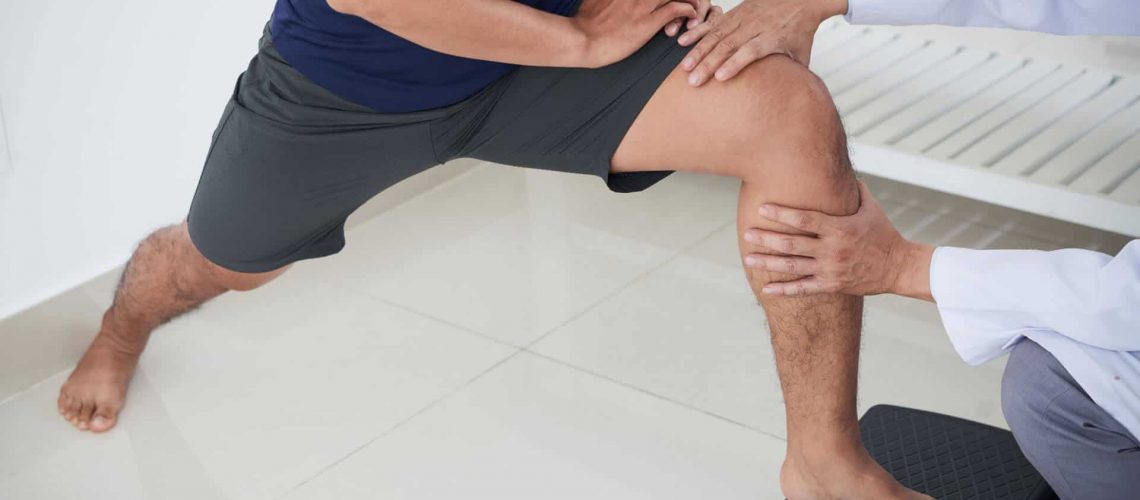Contents
A Closer Look at Winter Joint Pain
Many people enjoy cooler temperatures and look forward to the winter season. Unfortunately, if you’re one of the persons who experience winter joint pain, seeing the temperature drop is the last thing you want. There are more than a few things you can do to keep joint aches under control, however.
In this post, we’ll look at the root cause of your joint pain in cold weather as well as the most recommended ways to ensure your comfort and health.
Why do my Joints Hurt During Winter?
The answer to this question is not yet concrete. To have a definitive cause, considerably more research needs to be done. Still, medical professionals agree that there are a few likely reasons:
Your Body Has Reduced Blood Flow
When it gets cold, your body is more likely to focus blood flow on your body’s central organs. The aim is to protect essential organs such as the heart, lungs, and digestive organs. By sending more blood to this region of your body, it means that these organs can still function at optimal levels.
As the blood flow is redirected, blood vessels at the joints constrict and your extremities receive less blood. This results in your arms, legs, and shoulders being colder than the rest of your body. This chill can cause quite a bit of discomfort.
The Change in Barometric Pressure
Along with the drop in temperature, changes in the atmospheric pressure can also result in joint pain. The pressure change has been shown to cause inflammation which in turn influences an increase in nerve sensitivity and poor blood flow. All of these factors work together to cause your joints to hurt.
Prior Surgery or a Physically Active Lifestyle
Other common traits for persons who experience winter joint pain include previous orthopaedic surgery, a physically active lifestyle, or an exercise injury. When you’re active, you usually put a lot of pressure on the same areas that get very cold during the winter.
That includes your knees, ankles, and hips. The most common ailments are a stiff hip joint or pain at the back of the knee. It’s likely that the change in blood flow and barometric pressure make the affected areas more painful.
What Can I do to Fight Winter Joint Pain?
Now that we’ve looked at what causes winter joint pain, let’s go over some of the best ways to tackle the pain.
Keep Moving as Much as You Can
When your joints ache, exercise might be the last thing on your mind. However, research has shown that finding the right programs can help to relieve joint pain. Activities such as indoor swimming can keep you moving and warm at the same time. Make sure you warm-up and cool down well before exercising so you don’t hurt yourself.
Bear in mind that if you’re feeling significant pain, it’s best to consult your physician before starting or continuing an exercise routine.
Avoid Gaining Weight
The combination of staying indoors and limited movement can result in winter weight gain. This weight will only put more pressure on your already aching joints. Try and find ways to stay active during the day. If you’re absolutely not able to exercise, the next best thing is to focus on healthy and balanced nutrition.
Create a Balanced Diet
This might seem the same as the previous point but the emphasis is different. Instead of looking at all the food items that you can’t eat, seek out those that can help with maintaining healthy joints. For example, foods that are rich in omega-3 fatty acids may reduce inflammation.
On the negative side, foods that are high in saturated fat can contribute to inflammation and make your joint pain worse. It’s also important to make sure you’re drinking enough water.
Stay Warm
While your body is concentrating on keeping your vital organs warm, it’s up to you to warm up your extremities. Make sure to dress warmly and stay indoors as much as possible. If you must go outside, always wear appropriate clothing. A nice, heating pad can also work wonders on your aches and pains.
When Should I Consult an Orthopaedist?
A little joint pain when it gets cold might be expected, but excruciating pain is not. You should definitely get in touch with your orthopaedist if the pain is too much to bear and you need relief. The same is true of any new discomfort such as swelling, redness, or losing the use of an affected joint.
If you don’t yet have an orthopaedist, Thunder Basin Orthopaedics and Sport Medicine has the expertise you’re looking for. Whether you’ve had minor or major orthopaedic surgery or are dealing with injuries, we will design a personalized program that suits your needs. Contact us today to schedule an appointment before the cold really sets in!


